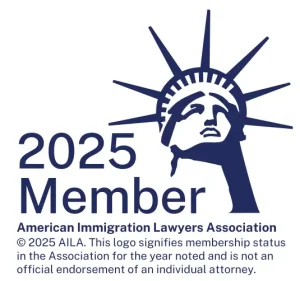As a Lawful Permanent Resident (LPR) planning to petition for your spouse and children, you’ve likely discovered that USCIS allows you to include your family members on a single Form I-130 petition. This raises an important question: should you file one petition for the entire family, or separate petitions for each person?
For years, the answer seemed obvious. One petition meant one filing fee, one set of paperwork, and a streamlined process. But immigration realities have shifted dramatically, and what once made perfect sense may no longer serve your family’s best interests.
Understanding Your Options Under Current Law
As an LPR, you may petition for certain family members to immigrate to the United States as permanent residents. Specifically, you can file for:
- Your spouse
- Your unmarried children under 21 years of age
The traditional approach allowed LPR parents to file a single Form I-130 petition covering the spouse and all unmarried minor children as derivatives in the F-2A category (spouses and children of permanent residents).
Who Always Requires Separate Petitions
Some family members must have individual petitions filed regardless of your preference:
- Children over 21: Must file separate petitions for the F-2B category (unmarried adult children of LPRs) per INA § 203(a)(2)(B)
- Married children: Cannot benefit from LPR petitions at all – there is no preference category for married children of permanent residents
- Stepchildren over 18: The step-relationship must be established before the child’s 18th birthday under INA § 101(b)(1)(B)
But for your spouse and minor children – the family members who can be included together – you face a strategic choice.
The Traditional Wisdom: One Petition Made Sense
Historically, filing a single I-130 petition for your family unit was the logical approach, and immigration attorneys routinely recommended it. The reasons were compelling:
Cost savings: One filing fee ($675 as of 2025) instead of multiple fees Simplified process: One petition, one set of supporting documents, one approval process Family unity: Everyone processed together in the F-2A category
This approach worked well because the F-2A category was current or nearly current. Families could file their single petition and expect to receive their immigrant visas within a reasonable timeframe, often within 1-2 years.
But that fundamental assumption no longer holds true.
What’s Changed: F-2A Processing Times Today
The F-2A category has experienced dramatic backlogs that transform the strategic calculation. Consider these current realities:
Current processing delays: F-2A moved ahead only 4 months in October 2025, representing progress on cases filed years earlier Multi-year waits: Current F-2A petitions face waits of 3-5 years or more Unpredictable movement: Unlike the historical pattern of steady progress, F-2A now moves irregularly
The Naturalization Timeline Factor
Here’s the crucial element that changes everything: Most LPRs become eligible for naturalization after 5 years of permanent residence (3 years if married to a U.S. citizen). The naturalization process typically takes an additional 6-18 months.
This means you could become a U.S. citizen and petition for immediate relatives within 5-7 years of obtaining your green card.
Immediate relatives of U.S. citizens face no numerical limitations or waiting periods under INA § 201(b)(2)(A)(i). They can process immediately.
The Critical Question: Is the Cheapest Route Still the Best Route?
When F-2A was current, saving money by filing one petition made perfect sense. Your family would process quickly together, and the cost savings were pure benefit.
But what if that’s no longer true?
If F-2A now requires a 4-year wait, but you could naturalize and upgrade your family to immediate relative status in 6 years, does the single-petition approach still serve your family’s interests?
Consider what happens under each scenario:
Scenario 1: Traditional Family Unit Approach
- File one I-130 petition ($675)
- Family enters F-2A category
- Risk: 4-year wait that could extend longer
- Major risk: If you naturalize while the petition is pending, your family members lose their derivative status and their cases are terminated
- Result: You’d have to start over, losing years of waiting time
Scenario 2: Separate Petitions Strategy
- File separate I-130 petitions for spouse and each child ($675 × 3 = $2,025 for family of three)
- Each family member gets their own F-2A case
- Advantage: If you naturalize, you can upgrade each case to immediate relative status without losing their place in line
- Flexibility: You can choose optimal timing for naturalization based on F-2A movement
A Real-World Example
Consider a current client situation: An LPR father wants to petition for his wife and two children, ages 8 and 12.
Traditional approach: One petition, $675, family waits together in F-2A Strategic approach: Three separate petitions, $2,025, each family member maintains independent status
The key question: Is saving $1,350 today worth the risk of losing years of waiting time if F-2A backlogs continue to worsen?
The “Two Horses in the Race” Strategy
Filing separate petitions essentially gives your family two paths forward:
- Path 1: If F-2A processing improves, your family processes under the original petitions
- Path 2: If F-2A continues to backlog, you naturalize and upgrade everyone to immediate relative status
This approach provides maximum flexibility. You’re not locked into hoping F-2A improves – you have options.
Additional Benefits of Naturalization
Once you become a U.S. citizen, you can also petition for:
- Your parents (immediate relatives)
- Your adult children (if any)
- Your siblings (though with longer waits in the F-4 category)
The separate petition strategy preserves all these options.
Legal Authority and Citations
The strategic approach rests on established immigration law principles:
- INA § 201(b)(2)(A)(i): Immediate relatives are not subject to numerical limitations
- INA § 203(a)(2)(A): F-2A category definition and processing requirements
- 8 CFR § 204.2(a)(4): Requirements for family-based petitions
- Matter of Velarde-Pacheco, 23 I&N Dec. 253 (BIA 2002): Principles governing priority date retention
When Separate Petitions Are Essential
Beyond strategic considerations, some situations require separate petitions:
The Aging Out Problem
If a child turns 21 while the F-2A petition is pending, they “age out” and must convert to the much slower F-2B category. While the Child Status Protection Act (CSPA) provides some protection, filing separate petitions eliminates this risk entirely.
Family Changes
Separate petitions provide protection if family circumstances change – divorce, death, or other life events that might affect one family member don’t impact the others’ cases.
Cost-Benefit Analysis: When Does the Strategy Make Sense?
The separate petition strategy makes sense when:
- You can afford the additional filing fees without hardship
- Your children are young (reducing aging-out risk)
- You plan to naturalize within 5-7 years
- F-2A backlogs appear likely to continue
The traditional approach might still work when:
- Additional fees create genuine financial hardship
- You plan to naturalize very soon (within 1-2 years) regardless
- F-2A processing dramatically improves (unlikely based on current trends)
Our Professional Assessment
Given current F-2A processing delays and the unpredictability of immigration policy changes, we recommend filing separate I-130 petitions for each family member if you can afford the additional fees.
This strategy:
- Provides maximum flexibility for your family’s future
- Creates insurance against continued F-2A backlogs
- Enables strategic timing of naturalization
- Prevents the devastating loss of years of waiting time
The additional cost today – roughly $1,350 for a typical family – represents insurance against potentially losing years of your family’s time together.
Making the Right Choice for Your Family
Every family’s situation is unique. The decision involves weighing:
- Your current financial situation
- Your children’s ages and aging-out risk
- Your naturalization timeline and intentions
- Your tolerance for uncertainty in F-2A processing
Is the traditional “cheapest” approach still the best approach when the circumstances that made it logical have changed? For most families in 2025, the answer is no.
Getting Professional Guidance
These strategic decisions will impact your family for years to come. Immigration law provides the framework, but applying it strategically to your specific circumstances requires careful analysis of multiple variables.
If you’re facing these choices, consider a consultation to explore your options. Understanding the trade-offs between cost savings today and flexibility tomorrow can help you make the decision that best serves your family’s long-term interests.
The attorneys at Immigration Law of Montana, P.C. have helped families throughout the Rocky Mountain region navigate these complex strategic decisions. We combine deep knowledge of immigration law with practical understanding of how families actually experience the immigration process.
This article is for informational purposes only and does not constitute legal advice. Immigration law is complex and fact-specific. Consult with a qualified immigration attorney for advice about your particular situation.

